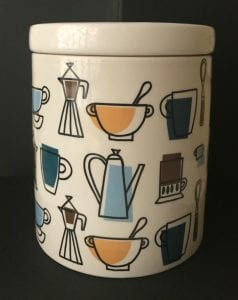Susanna Connolly, Third Year BA (Hons) History of Art and Design student assesses the use of Instagram in current museum practice.
Over the past decade, museums have begun to embrace social media as a promotional tool and a means to encourage engagement within the museum setting. Critics, however, are concerned about how engaging in social media devalues the museum experience and undermines museum authority. This discussion has become more relevant with the global pandemic forcing many museums to re-evaluate their practise and broader role within their community. Within this piece, I argue that utilising social media platforms such as Instagram can be extremely beneficial in creating and consolidating connections with museum artefacts and audiences.
Instagram is a social media platform that is centred around the posting and sharing of images. Designed to be accessed predominantly through mobile phones, the platform encourages personal photography grounded in individuals’ everyday experiences. The rise of Instagram has been closely entwined with the selfie phenomenon and as a result, holds negative connotations with critics believing the site fuels superficiality and vacuous entertainment.
With the events surrounding the global COVID-19 pandemic beginning in March 2020, museums and cultural institutions were forced to close their doors to the public. In doing so, these institutions had to re-address relationships with its visitors with social media platforms to reconsider how to overcome physical barriers to access. I decided to use the @Tate Instagram page to examine how museums used social media to encourage interaction, engagement, and education with their collection.
Over lockdown, Tate sought to engage their audience by organising various art related challenges and promoting entries on the Tate Instagram page. An example of this was the one-minute sculpture challenge. Posted on the 29th March, Tate challenged followers of their Instagram page to create a one-minute sculpture and post it on their personal account, tagging Tate so that entries could be shared on the Tate platform.
Tate shared 86 responses to the challenge which are pinned permanently to the highlights section of their account. The entries featured responses from a diverse range of participants, suggesting how social media can be an accessible site to engage with art and art institutions. The quality of responses was also varied, implying that difference in art ability was welcomed and encouraged. The one-minute element of the challenge made it easy to engage with and informal which encouraged participation. As mentioned in the announcement, the challenge was inspired by the work of the artist Erwin Wurm, and information of his art practice alongside photos were also shared on the Tate Instagram page. This is an example of how Tate was able to use Instagram as a platform to reconcile accessible forms of art education while encouraging audience participation and entertainment.
A benefit of utilising social media platforms is that they can eliminate not only physical barriers to access but social ones too. Anyone with an Instagram is invited to participate within the one-minute challenge. This active engagement centres the viewer within the experience and consolidates informal learning. The immediacy of social media allows for objects to be re-framed within current cultural contexts, making them more relevant, and draws out different understandings of the artefacts. Involvement within challenges such as the one-minute challenge was a much-welcomed escape from the anxious realities many of us were facing during the first lockdown. Within these uncertain times, museums can provide a sense of community and escape, vital for collective mental health. With this considered I would argue that museum social media profiles foster interactions with the audience, which in turn, can be beneficial to both the public and museum practise itself.







